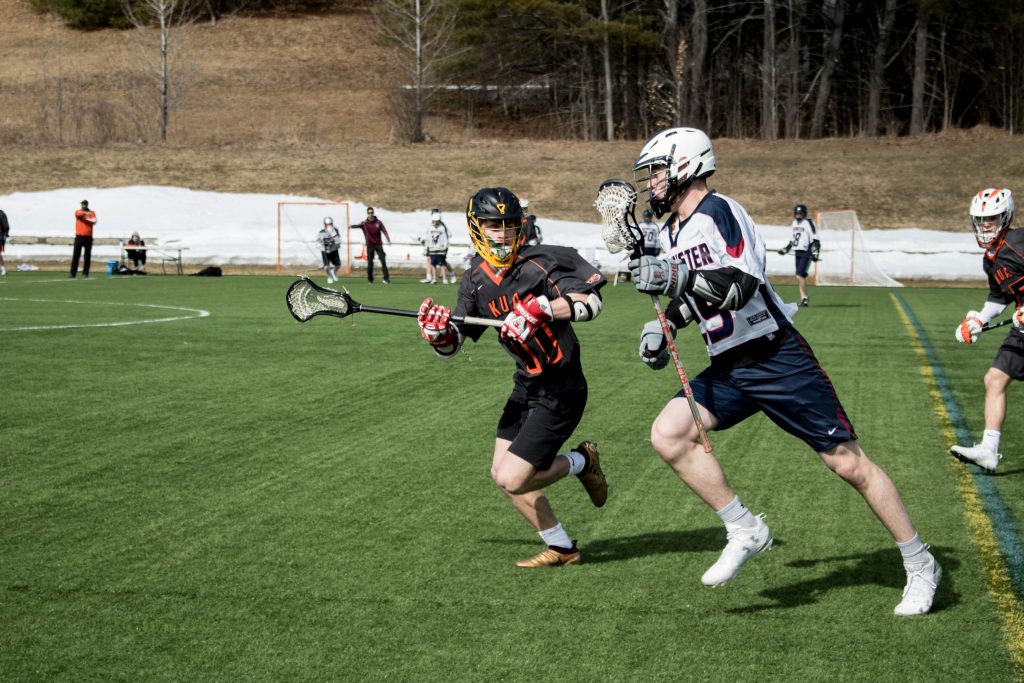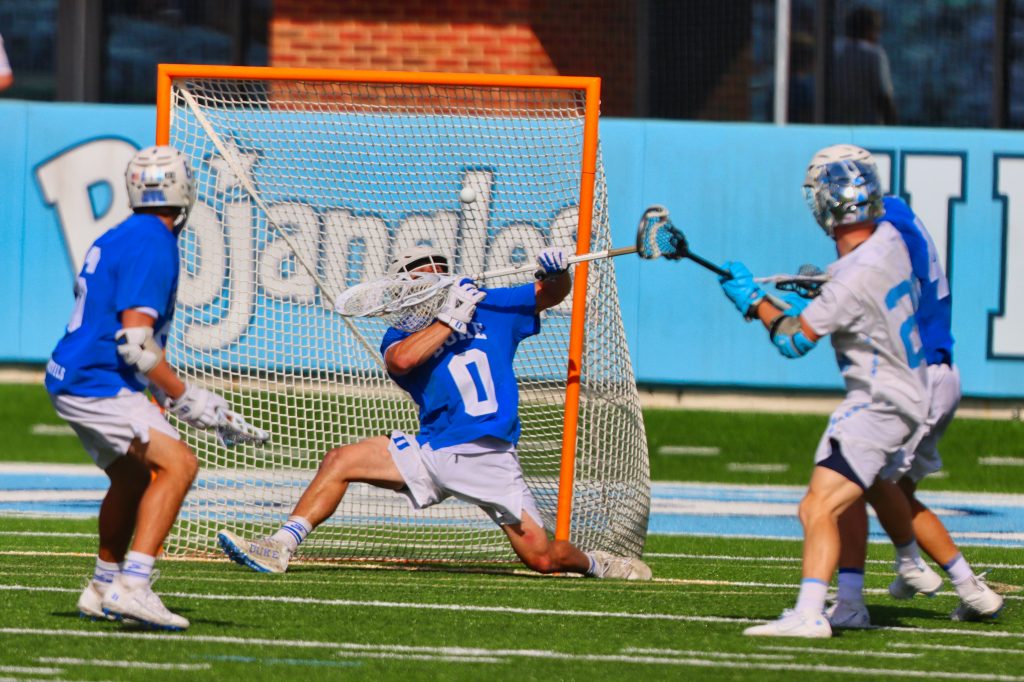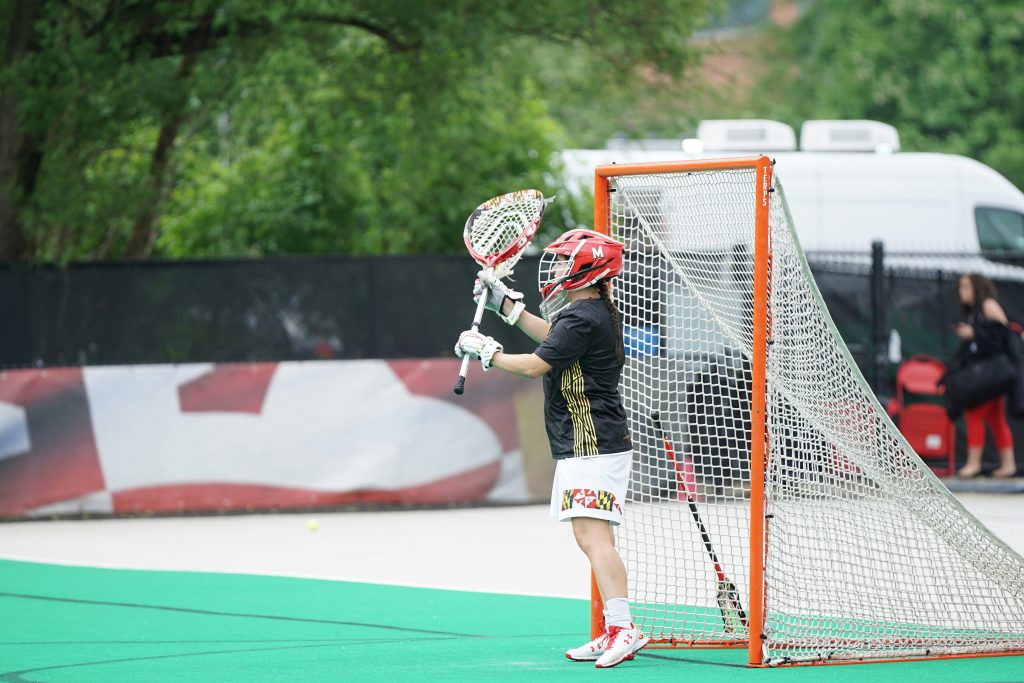

10 Essential Skills Every Lacrosse Player Should Master
BlogClub SportsLacrosseNews May 4, 2024 Lauren Keating 0

Once joining a lacrosse team, players will find there’s more to the sport than just wielding a stick and learning the rules. To be a good lacrosse player, athletes need to master a diverse set of skills that include strategy and athleticism.
Whether you’re a newcomer to the sport or a seasoned player looking to enhance your performance, understanding and mastering key lacrosse skills is essential for success on the field.
In this comprehensive guide, we detail the fundamental skills every lacrosse player should strive to master. It also offers insights, tips, and drills to help players of all levels elevate their lacrosse game.

10 Skills Lacrosse Players Should Master
1. Cradling
Cradling the ball in lacrosse is a fundamental skill that is crucial for maintaining possession of the ball. Cradling includes rocking the stick back and forth to keep the ball in the pocket while you run and dodge opponents that are trying to steal the ball.
This not only does this keep the ball from falling out, but it also helps the athlete move around better, run, get past defenders, and make offensive plays including passing to a teammate.
By maintaining a tight cradle, players can shield the ball from defenders’ attempts at a turnover and gaining possession for their team.
Lacrosse Tip: Use both hands
Many players have a dominant hand for cradling and ball handling, but developing proficiency with both hands enhances a player’s ability to evade defenders in either direction and execute plays from multiple angles.
Drills
To improve cradling technique with both hands, players can engage in various drills and exercises designed to enhance stick control, hand-eye coordination, and ball security. One effective drill is the stationary cradle drill, where players practice cradling the ball while standing still, focusing on maintaining a steady rhythm and keeping the ball in the pocket.
Another useful exercise is the cradle and move drill, where players cradle the ball while moving laterally or in a zigzag pattern, simulating game-like situations and defensive pressure.
2. Passing
Accurate passing is an essential skill every lacrosse player should master. Passing allows the team to keep possession to create an opportunity to score.
Passing is all about team coordination. Passing correctly enables players to quickly transition between offense and defense.
The types of passes in lacrosse include:
- Overhead Pass: A two-handed motion with the stick held overhead. This is ideal for long-distance distribution, initiating plays, and creating scoring chances.
- Sidearm Pass: Executed with a low, sweeping motion. It is effective for quick and accurate delivery in tight spaces, fast-paced situations, and transitions.
- Behind-the-Back Pass: A flashy technique involving throwing the ball behind the player’s back. It’s useful for surprising defenders and creating unexpected passing opportunities.
- Underhand Pass: Executed with an underhand motion. This is effective for quick and accurate delivery in traffic or under defensive pressure and is commonly used in close-quarters situations.
- Quick Stick Pass: Involves catching and releasing the ball fluidly without cradling. This is ideal for maintaining possession, reacting to defensive pressure, and executing rapid passing combinations.
Drills
Practice passing in lacrosse is the “Partner Passing Drill.” Stand 10-15 yards apart from a player, facing each other. Pass the ball with each of the passes mentioned above stationary. Then add movement like a jog in place to work on accuracy when in motion.
3. Shooting
Shooting in lacrosse requires a combination of proper form, enough power, and accuracy.
Start standing feet shoulder-width apart with knees slightly bent.
Hand placement: The dominant hand is placed bear the bottom of the stick. The other grips the stick higher up. This helps with control and leverage.
Tip: As you prepare to shoot, focus on transferring your weight onto your front foot.
Hurl the ball forward by pulling the stick backward and then whipping it forward by snapping at the wrist. As the stick lowers, make sure to rotate your hips and shoulders toward the goal.
Lacrosse Tip: This rotational movement generates power to make the ball fly to the target and not fall to the ground directly below.
Lacrosse Tip: Make sure to extend the arms fully when releasing the shot. This will help with accuracy.
Practice is the only way to master shooting skills in lacrosse. Keep shooting and add targets to a net to help improve accuracy.
Drills
Practice with stationary shooting drills to nail technique and form. Once you have the basics, work on dynamic drills like shooting on the run.

Photo by Gene Gallin on Unsplash
4. Catching
Catching the ball in lacrosse is just as an important of a skill to master as shooting is. To catch correctly, start with proper hand positioning on the stick. This means keeping both hands apart and be ready to receive the ball.
Lacrosse Tip: Have “soft hands” to cushioning the impact of the ball with your stick to prevent a rebound.
Lacrosse Tip: Keep your eyes on the ball from the moment it leaves the passer’s stick until it makes contact with your stick.
Drills
Practice basic catching drills such as “partner passing” that will work on improving hand-eye coordination and timing. Add dynamic drills that involve catching while on the move. Reaction ball drills are a great way to challenge reflexes.
5. Dodging
Dodging opponents in lacrosse is an important skill for being able to score. Dodging means deceptive movements like the the split dodge (changing direction with a quick step), roll dodge (rolling away from a defender), and face dodge (fake pass or shot to avoid a defender).
Drills
To practice dodging do ladder footwork drills and cone agility drills.
6. Ground Ball Retrieval
Getting a ground ball in lacrosse is great for the player’s team. To retrieve a ground ball when under the pressure of a game, get low while keeping the stick parallel to the ground.
Lacrosse Tip: Use your body as a shield.
Drills
Practice “GB battles” drills where players compete for ground balls in tight spaces. This helps increase quick reaction time while under pressure.
“GB battles” drills simulate game-like scenarios where players compete for ground balls in tight spaces or under pressure from opponents. The idea is that players must battle against each other to gain control of the ground ball.
7. Defensive Positioning
In lacrosse, mastering defense is an important skill. To improve defense skills, the player should be ready in a defensive position. This means having a balanced stance with knees bent and body squared to the opponent.
Position the stick in the passing lane to always be ready to check or intercept passes.
Defend against dodges with quick lateral movements and stick checks.
Drills
Drills like “mirror dodging” and “defensive shuffling” improve agility and defensive technique. One player acts as the attacker while the other player copies their movements. The defender closely shadows the attacker’s movements, staying in front and using footwork and stick positioning to prevent the attacker from advancing towards the goal.
8. Offensive Strategy
Having a strong offense is key for winning lacrosse games. This is why having an offensive strategy is important. Strategies may include effective spacing, cutting, and off-ball movement to create scoring opportunities.
Teamwork and communication are essential for coordinating these actions and exploiting defensive gaps.
Drills
The “3v2 fast break” is a great drill to work on quick ball movement and decision-making. This drill simulates a game-like scenario where three offensive players face two defenders. The objective is for the offensive team to use the power of number (being 3 vs 2) to score a goal.
9. Goalkeeping
Some players excel at goalkeeping more than others. However, working in this position helps make the athlete a more well-rounded player.
Lacrosse goalkeepers have more responsibility for covering the goal, so they need fast reaction time to save shots.

Photo by Jeffrey F Lin on Unsplash
Drills
Goalkeepers need to practice stick skills for accurate clearing passes under pressure. Drills like “reaction ball saves” help to improve reaction time and reflexes as well as hand-eye coordination, while “crease movement drills” focus on agility and positioning in the goal area.
10. Fitness And Conditioning
Being in good physical shape is important for lacrosse athletes. Players need to work on speed, agility, endurance, and strength. Speed and agility enhance quick movements like when needing to dodge. Endurance is also required to be able to perform throughout the game. Strength training is helpful to support powerful shots.
Incorporate interval training, plyometrics, and strength exercises like squats and push-ups into workouts. Agility drills, sprint intervals, and cardiovascular conditioning all will help increase and maximize performance while minimizing fatigue on the field.









No comments so far.
Be first to leave comment below.